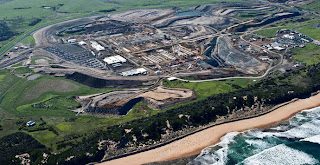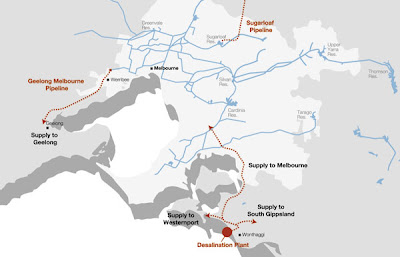 |
| Wonthaggi Desalination Plant |
· The Victoria’s desalination Plant is designed to remove soluble salts and minerals from sea and ocean water.
· Intended so it is suitable for drinking, irrigation and industrial uses
· Alternative source in areas that have limited amount of fresh water
· Providing a reliable and safe supply of water to growing communities













